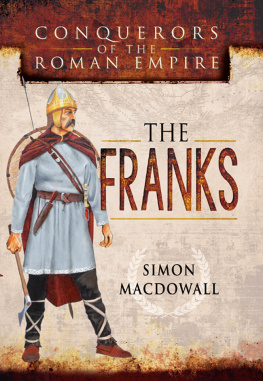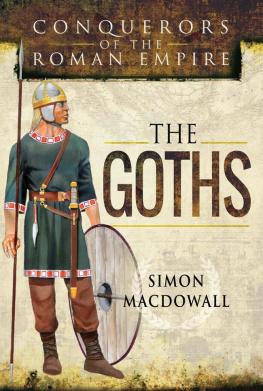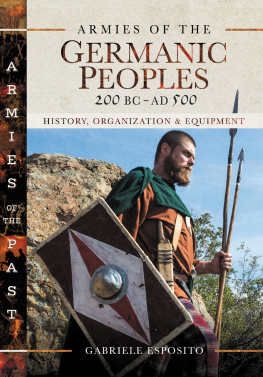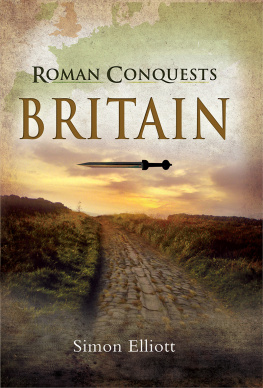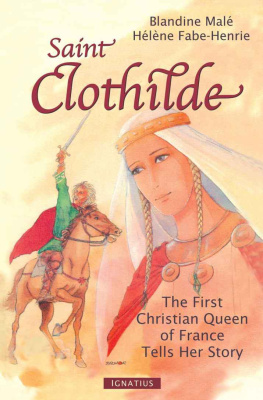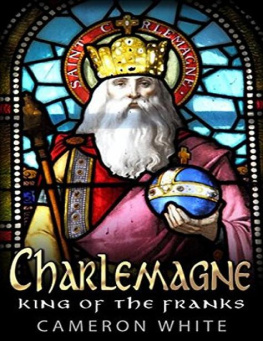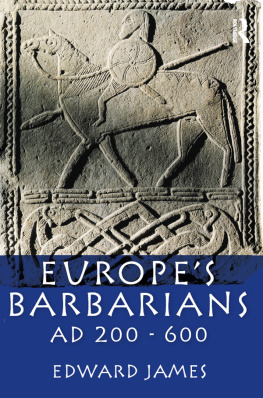Pagebreaks of the print version

Conquerors of the Roman Empire
To my children Katharina and Alexander modern descendants of the Alamanni.
Conquerors of the Roman Empire
The Franks
Simon MacDowall
First published in Great Britain in 2018 by
Pen & Sword Military
An imprint of
Pen & Sword Books Ltd
Copyright Simon MacDowall 2018
ISBN 978 1 47383 742 3
eISBN 978 1 47388 960 6
Mobi ISBN 978 1 47388 959 0
The right of Simon MacDowall to be identified as Author of this Work has been asserted by him in accordance with the Copyright, Designs and Patents Act 1988.
A CIP catalogue record for this book is available from the British Library
All rights reserved. No part of this book may be reproduced or transmitted in any form or by any means, electronic or mechanical including photocopying, recording or by any information storage and retrieval system, without permission from the Publisher in writing.
Pen & Sword Books Limited incorporates the imprints of Atlas, Archaeology, Aviation, Discovery, Family History, Fiction, History, Maritime, Military, Military Classics, Politics, Select, Transport, True Crime, Air World, Frontline Publishing, Leo Cooper, Remember When, Seaforth Publishing, The Praetorian Press, Wharncliffe Local History, Wharncliffe Transport, Wharncliffe True Crime and White Owl.
For a complete list of Pen & Sword titles please contact
PEN & SWORD BOOKS LTD
47 Church Street, Barnsley, South Yorkshire, S70 2AS, England
E-mail:
Website: www.pen-and-sword.co.uk
List of Illustrations
Barbarian captives taken by the Romans on the Middle Rhine.
King Childerics signet ring.
Gold and garnet bees from Childerics grave.
The tombstone of Lepontius, a fourth century Roman soldier stationed on the Upper Rhine.
A silver disc from the horse harness of an Alamannic noble of the late sixth-early seventh century.
The head of a dragon standard which the Romans adopted from the Sarmatians for their cavalry units.
A depiction of a Frankish warrior on a gravestone from the Rhine.
Combs found in an Alamannic grave near Strasbourg.
Alamannic weapons.
Modern reconstructions of Frankish shields.
Iron boss covering the central hand grip of Frankish shields.
A prominent shield boss, which would have been a very effective offensive weapon when thrust against an opponent.
A reconstruction of a Roman patrol ship of the Classis Germanica based on wrecks found at Mainz.
A Frankish horse burial.
Modern recreation of an alliance being formed between two Frankish war leaders.
A sixth century silvered Frankish belt buckle proclaiming the owners Christian faith.
A recreation of fourth century negotiations between a Roman frontier commander and a Frankish chieftain seeking land in exchange for providing troops for the Roman army.
Re-enactors equipped as fourth-fifth century Roman soldiers.
Reconstruction of the arms and armour of a fully equipped sixth-seventh century Frankish warrior.
The magnificent Niederstozingen helmet from a late sixth century Alamannic grave.
Reconstruction of a Frankish village in northern France.
The formidable walls of Sens, built by the Romans in the third century, provided protection from an Alamannic siege in the fourth century.
A number of arrowheads from Alamannic graves.
A gilded helmet is typical of the style worn by most Roman soldiers in the fourth-fifth centuries.
The curved head of a fifth century francisca the classic Frankish throwing axe.
An ivory relief showing the baptism of Clovis.
A jar of coins buried by its Roman owners when they fled civil wars and barbarian attacks in the third century.
The insignia of the Roman Magister Officiorum showing the arms factories and guards units he controlled.
The insignia of the Roman Magister Equitum showing the shield designs of the most senior cavalry units in the later Roman army.
A modern reconstruction of a wealthy sixth-seventh century Frankish warrior based on archaeological finds.
The skull of an Alamannic warrior who was cut down by a sword blow to the head.
A fifth century Alamannic skull showing the practice of skull deformation introduced by the Huns.
A sixth century Alamannic helmet from Baldenheim in Alsace.
An array of fifth century Gallo-Roman and Frankish grave goods from Soissons.
Reconstructions of female Alamannic costumes.
The Roman Imperial Palace at Trier.
Items of horse furniture from a Frankish grave.
Reconstruction of the grave of a high-status Frankish warrior near Mainz from AD 525.
A style helmet, typical of the type worn by Franks, Alamanni, Burgundians and Romans in the fifth-sixth centuries.
Fragments of chain mail body armour and helmet neck guard from a Frankish grave.
The grave of a late fifth century Frankish warrior from northern France.
The grave goods of a high-status early sixth-century Frankish warrior from near Dsseldorf.
Maps
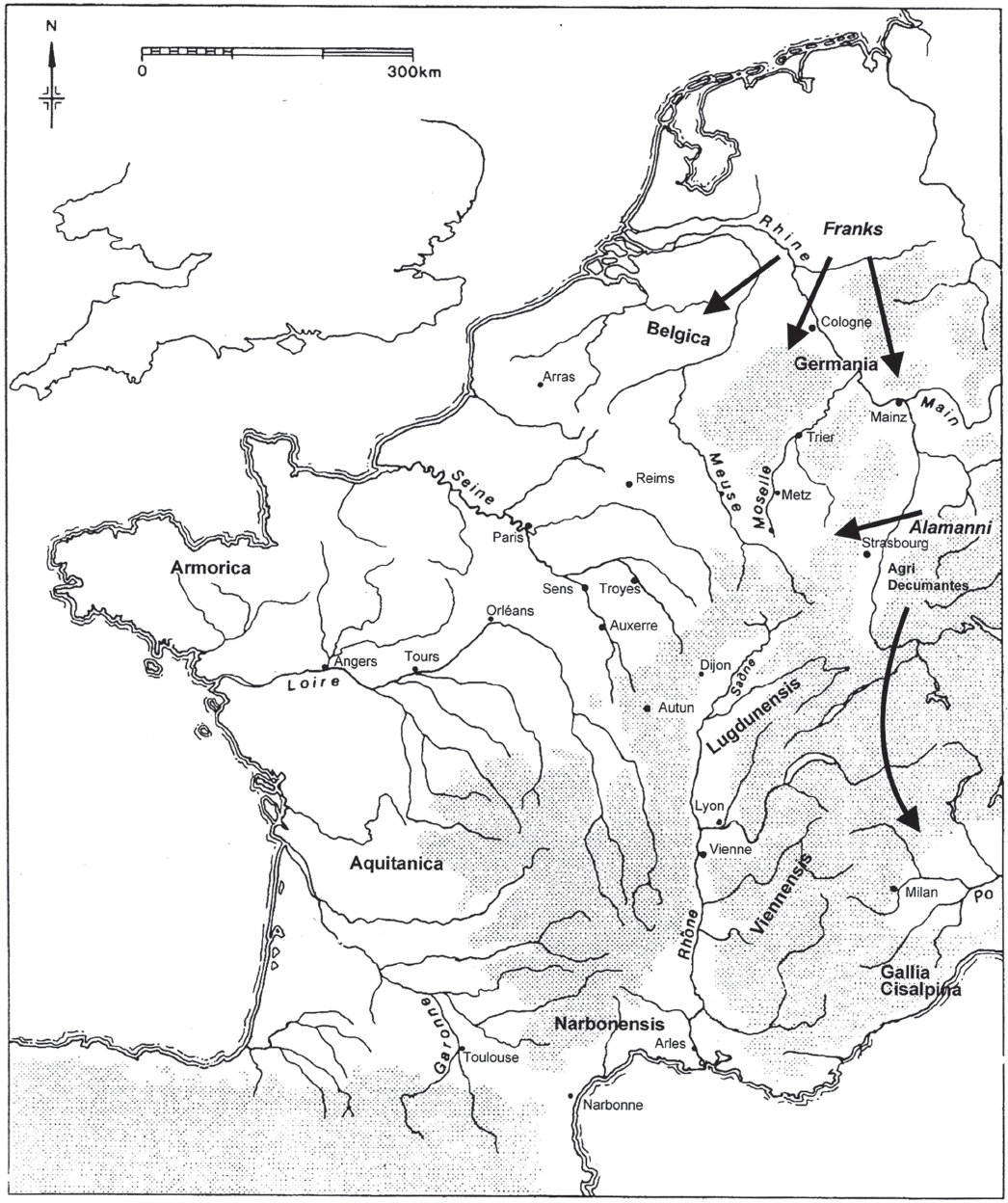
Map 1: Third century Gaul.
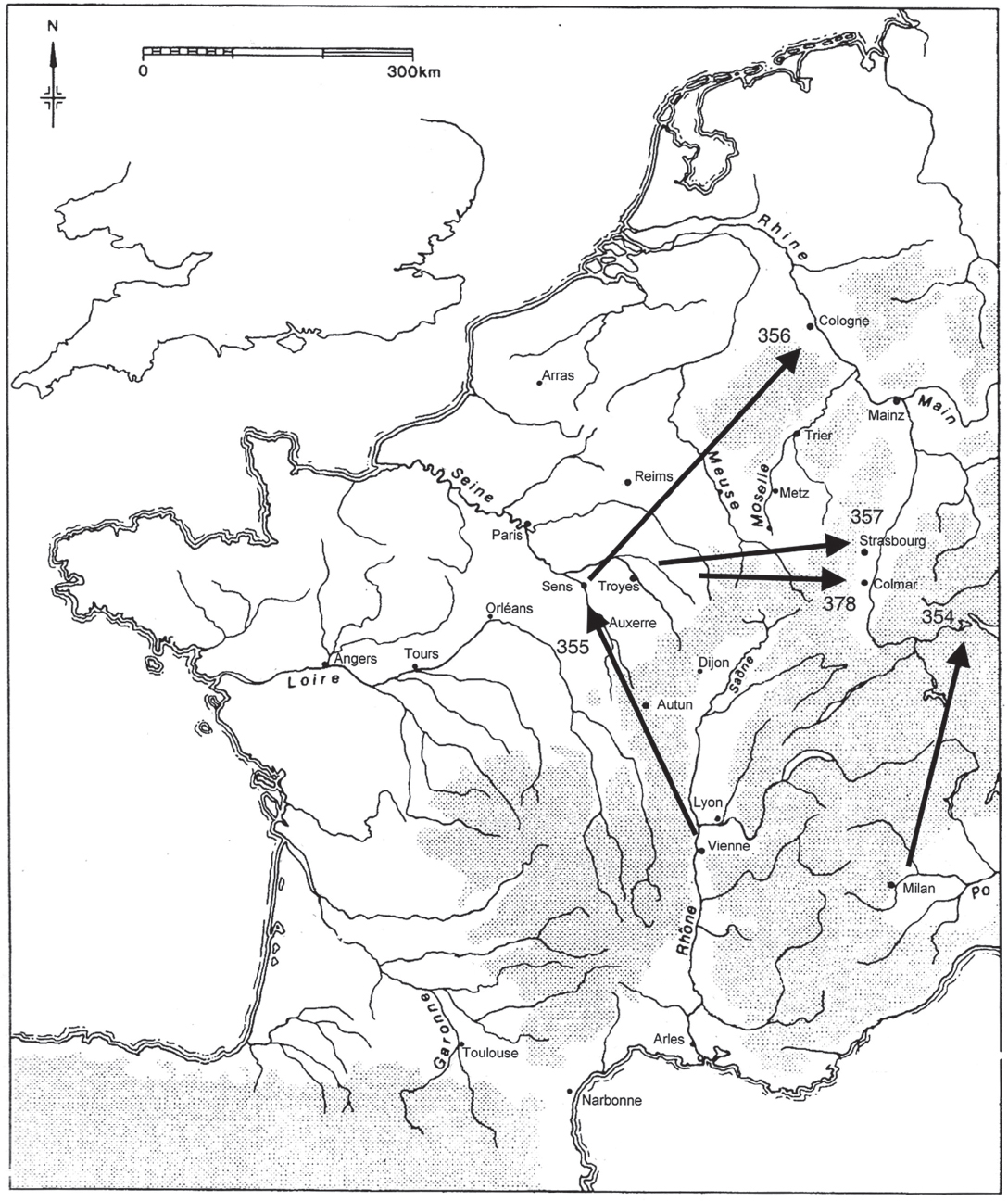
Map 2: Roman campaigns against the Franks and Alamanni, AD 355378.
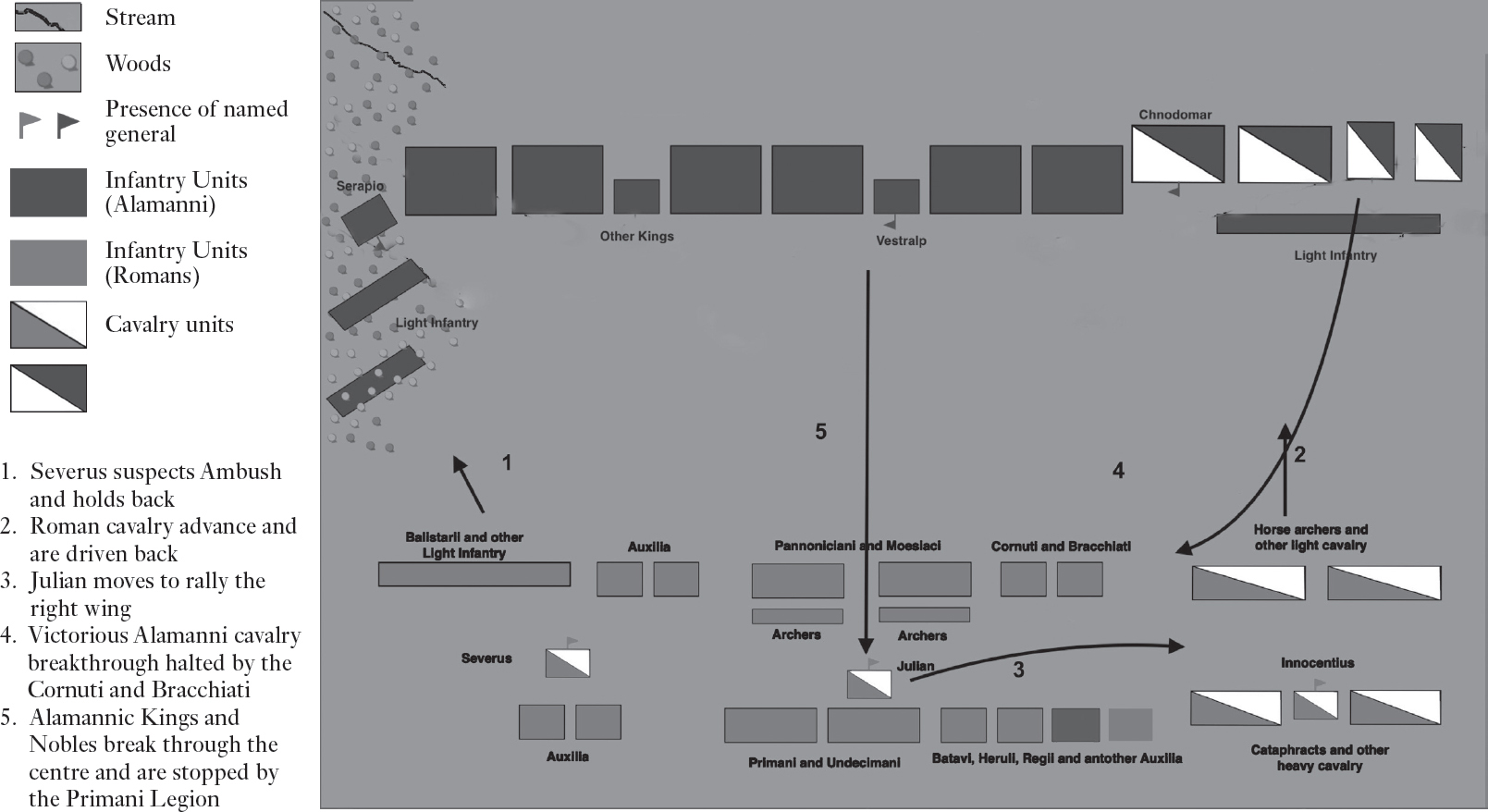
Map 3: The disposition of troops and opening moves of the battle fought near Strasbourg in AD 357 between the Romans, commanded by Caesar Julian, and the Alamanni, led by Chnodomar and Vestralp.
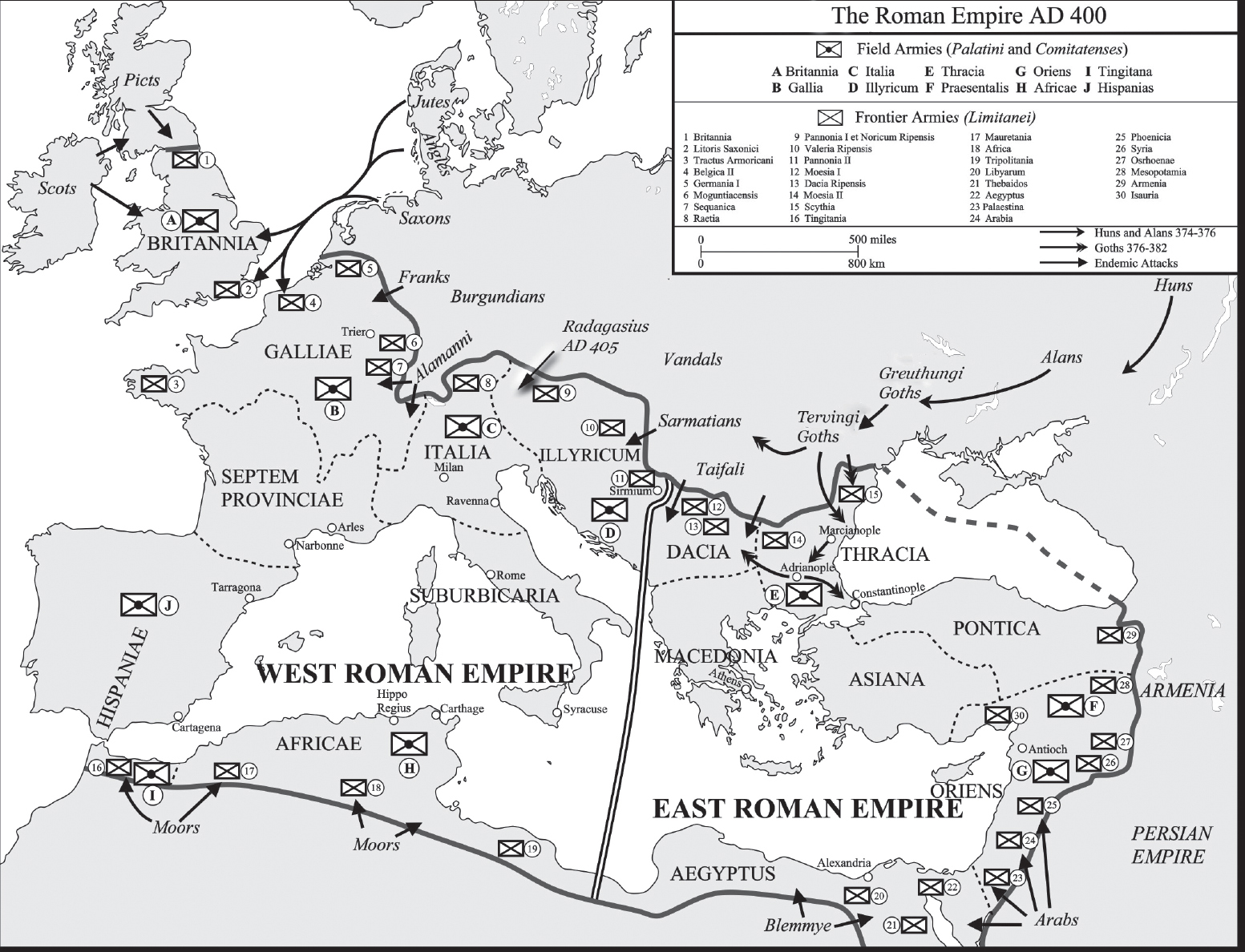
Map 4: The disposition of Roman armies and the main barbarian movements at the start of the fifth century.
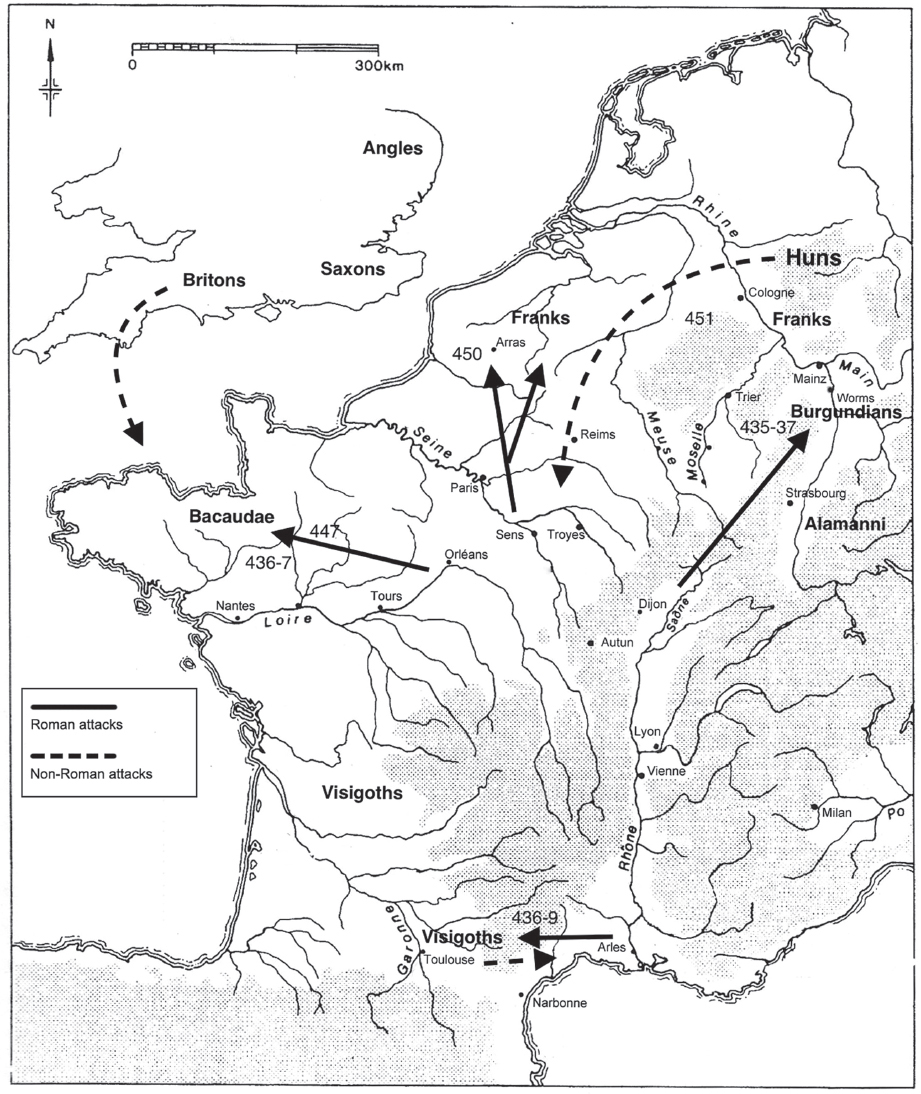
Map 5: Aetius campaigns in Gaul, AD 430451.
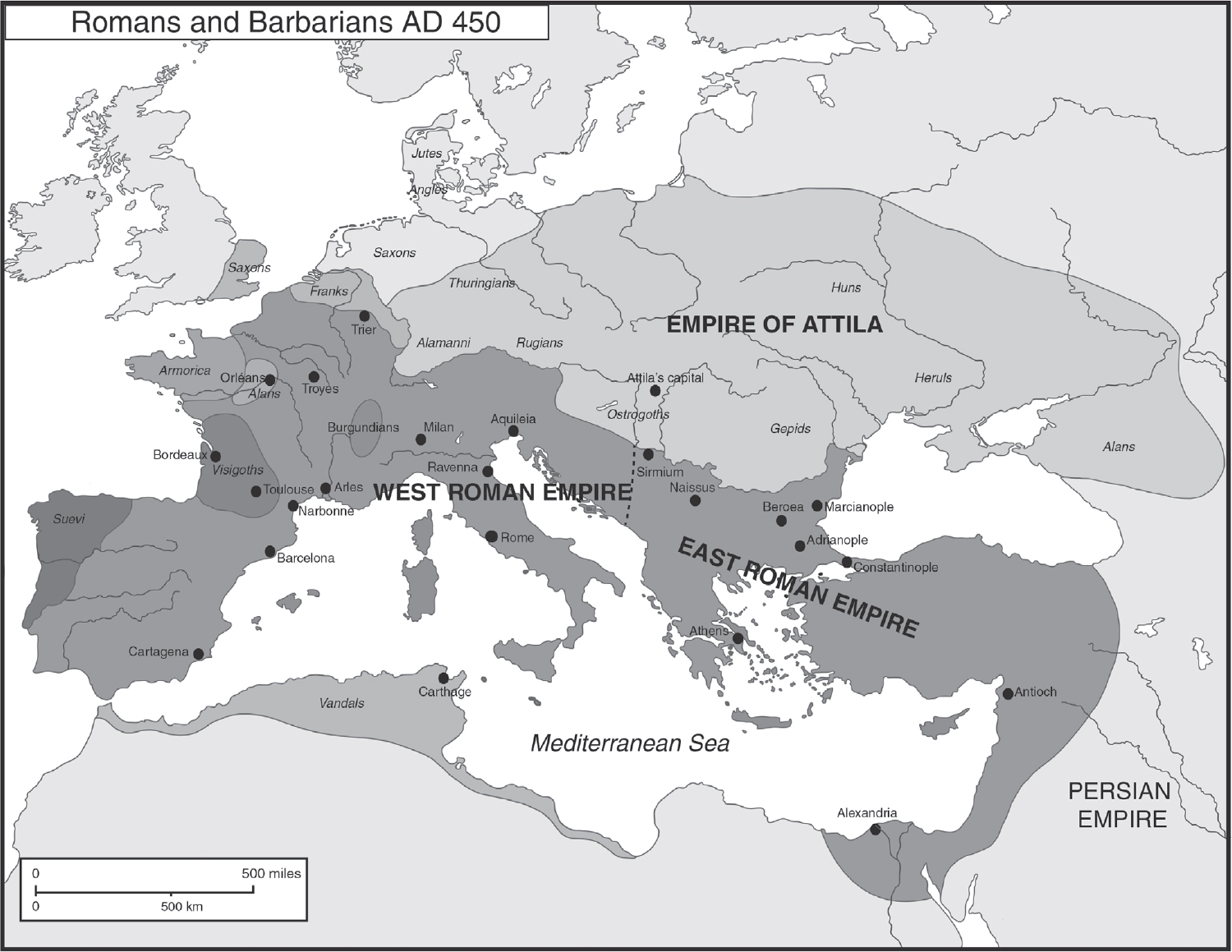
Map 6. The strategic situation in the mid fifth century just before Attilas invasion of Gaul.
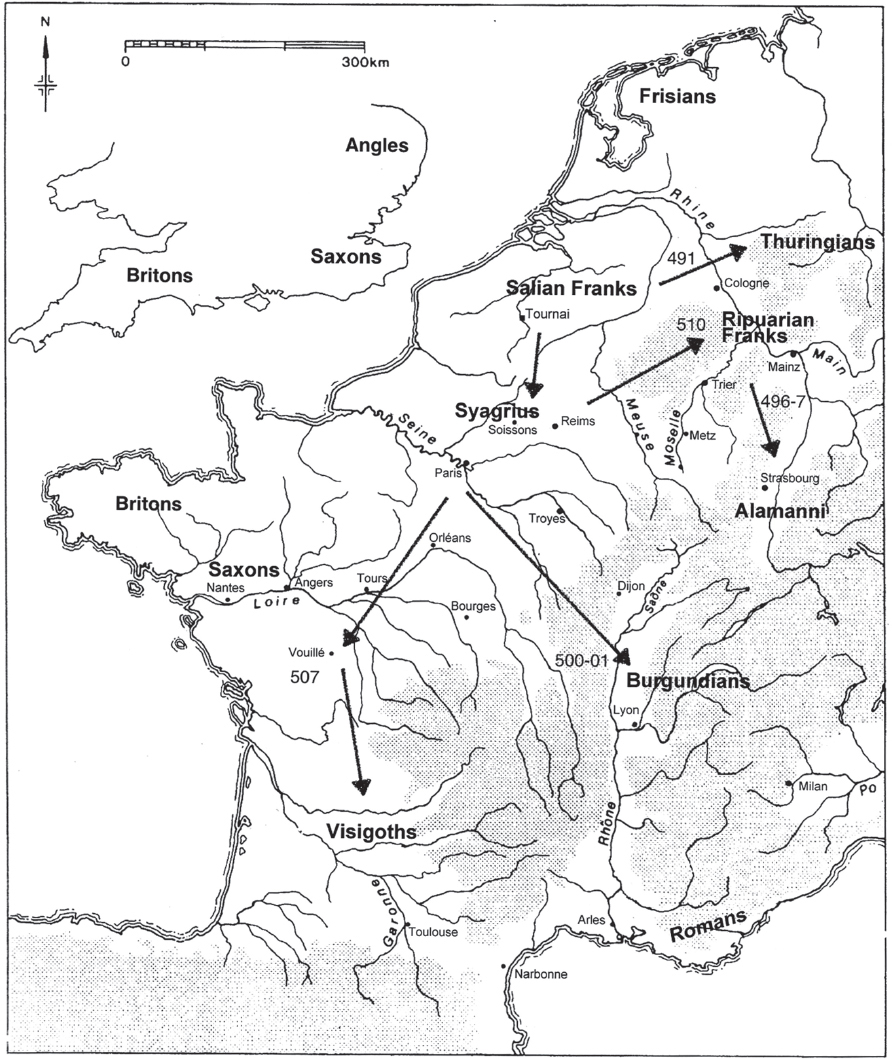
Map 7: Clovis campaigns.
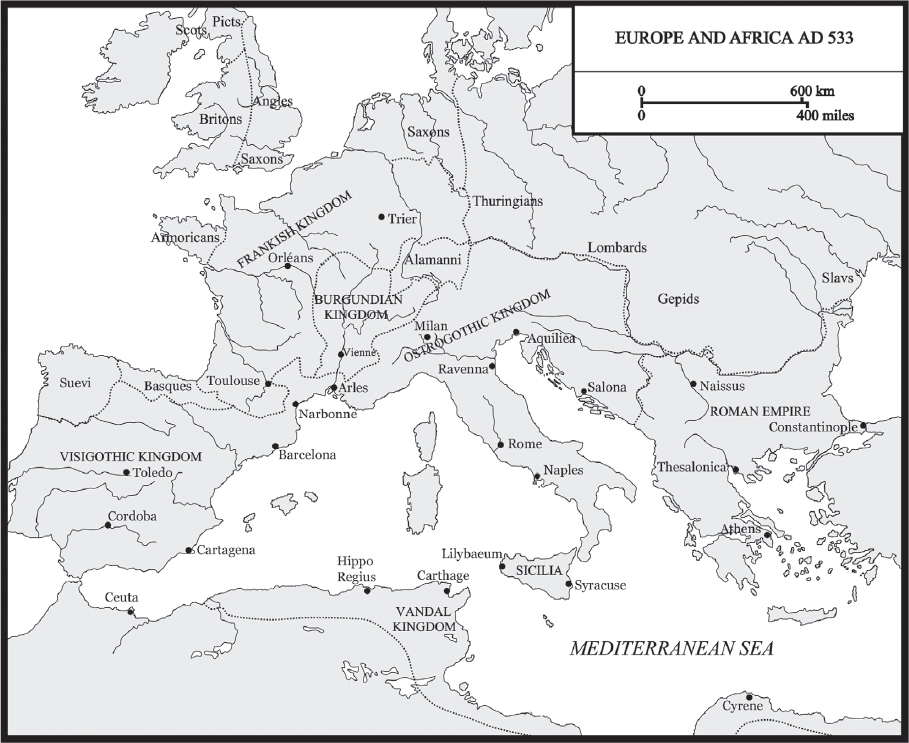
Map 8: The kingdoms and peoples of Europe and North Africa just before the East Roman Emperor Justinian began his reconquest of the West.
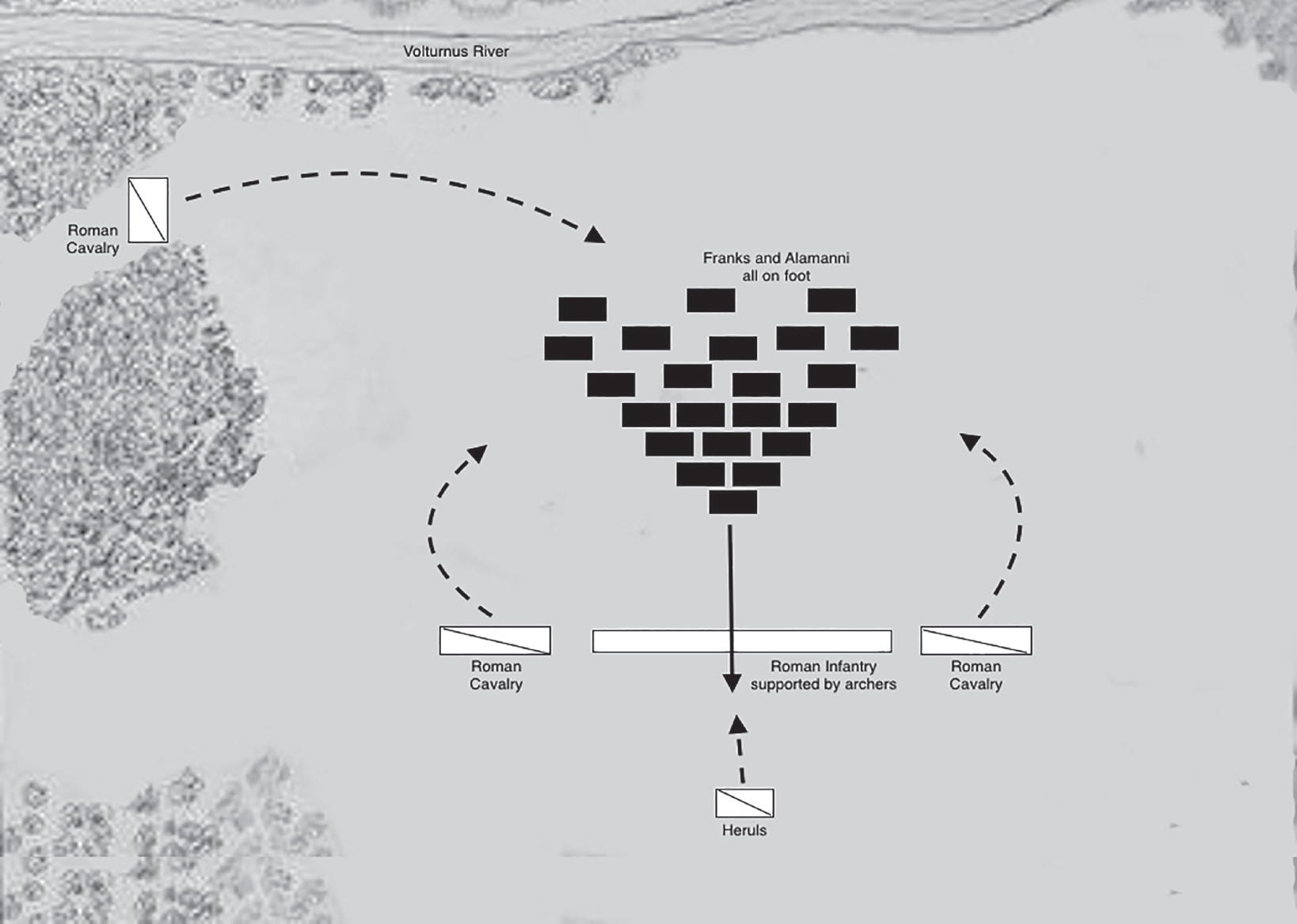
Map 9: The Battle of Casilinum, AD 554.
Chapter 1
The Rhine Tribes
Theodomer, king of the , dwelt across the Rhne in the district which is adjacent to the city of Lyons.

